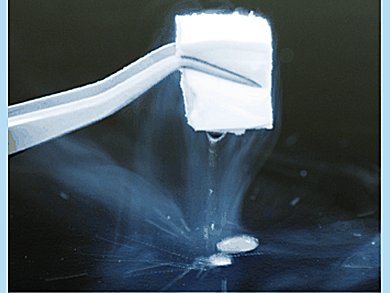The separation of oil and water is important for saving endangered environments, e.g., during an oil spill. Hydrophobic surfaces effectively adsorb/absorb oily target compounds that are mixed with an aqueous phase. However, these methods involve complicated and lengthy processes and expensive reagents and devices, which prevent their use in practical and commercial applications.
Kazuyoshi Kanamori and colleagues, Kyoto University, Japan, have reported the development of a new kind of superhydrophobic medium for the separation of oil and water. Their marshmallow-like gels, which are based on polysiloxane networks, are synthesized from various alkoxysilanes, such as tri-, di-functional, and bridged alkoxysilanes, as co-precursors by a facile process and without special conditions. Copolymerization with various types of alkoxysilanes adds functionality to the gels, which allows for the flexible design of surface chemical properties.
The gels are superhydrophobic and can be used to remove organic compounds from water through absorption. They can then be recovered by squeezing them out of the gel. The gel retains flexibility over a wide temperature range, even in liquid nitrogen, which extends their possible applications to use in harsh environments.
Together with high sound absorption properties, the multifunctional gels are expected to further extend the practical applications of this class of compounds.
- Facile Synthesis of Marshmallow-like Macroporous Gels Usable under Harsh Conditions for the Separation of Oil and Water,
Gen Hayase, Kazuyoshi Kanamori, Masashi Fukuchi, Hironori Kaji, Kazuki Nakanishi,
Angew. Chem. Int. Ed. 2012, 52.
DOI: 10.1002/anie.201207969




